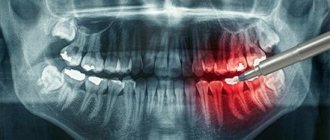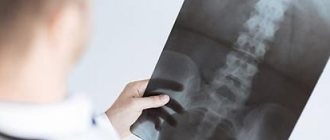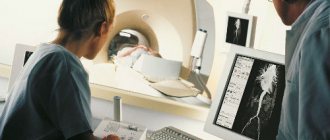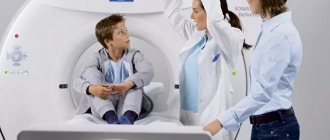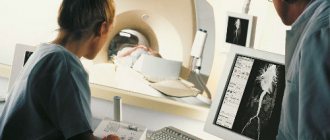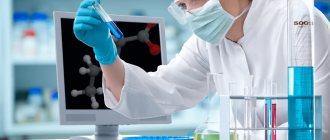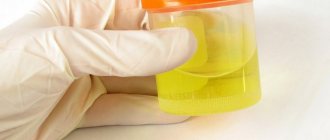Abdominal organs | Kidneys and bladder |Pelvic organs (women) | Mammary gland | Prostate and bladder (husband) | Doppler ultrasound, duplex scanning of veins and arteries of the extremities
Ultrasound examination (ultrasound, sonography) is a modern, safe, non-invasive diagnostic method that does not use harmful radiation. During the examination, very high frequency sound is used, reflected from the internal organs, it is captured by a sensor, processed using a computer program and converted into an image.
For diagnosing the condition of internal organs, ultrasound is considered the most informative method. However, it requires some preparation from the patient. For example, it is important to ensure minimal gas formation in hollow organs such as the stomach and intestines, otherwise the test may be less accurate and reliable. For the same reason, a special gel is applied to the patient’s skin. The gel does not cause discomfort, does not contain allergens or substances harmful to health, does not leave greasy stains on clothes and is easily washed off with plain water.
If you are taking medications, notify the ultrasound physician.
It is impossible to perform an ultrasound after fibrogastroscopy and fibrocolonoscopy, as well as X-ray examinations of the gastrointestinal tract, since in this case air enters the lumen of the gastrointestinal tract or radiopaque substances are introduced, which greatly complicates the ultrasound.
Preparation for ultrasound of the abdominal organs (including examination of the abdominal aorta)
- 3 days before the ultrasound examination, it is necessary to exclude gas-forming foods from the diet: brown bread and baked goods, milk and fermented milk drinks, legumes (peas, beans, lentils, etc.), raw fruits and vegetables, sweets, smoked meats, beer and carbonated drinks , alcohol. Stop taking tablet laxatives.
- The study is carried out strictly on an empty stomach. If it is scheduled for the morning, then the last meal can be no later than 19:00 of the previous day (light dinner). If the study is carried out in the afternoon, then the last meal is recommended at least 6-10 hours before (light breakfast).
- Stop smoking for two hours before the test to avoid spasms and deformation of the walls of the hollow organs.
Preparing for an ultrasound of the kidneys and bladder
- Follow all recommendations regarding abdominal ultrasound (see above).
- 1.5 hours before the ultrasound examination, gradually drink 1-1.5 liters of any liquid (tea, water, fruit juice), do not urinate! For the study, it is necessary that the bladder is completely full.
- If it is impossible to tolerate and there is a strong urge to urinate, it is permissible to empty the bladder a little to relieve tension and drink a little liquid again to achieve complete filling of the bladder by the time of the examination.
What will a stomach ultrasound show?
This method of studying this organ will make it possible to determine the presence of foreign objects, the occurrence of a hernia, varicose veins, congenital pathologies, changes in the lymph nodes, etc.
The main thing that can be done with an ultrasound of the stomach is:
- determine peristalsis and intestinal motility along with the stomach;
- indicate the thickness of muscle tissue, as well as the location of thinning or thickening of the walls;
- determine the amount of fluid in the stomach;
- study the structure of the gastric walls, determining their possible deformation and thickness;
- confirm or refute the presence of tumor-like neoplasms;
- establish the correct location of all nearby organs in the abdominal cavity and their structure.
Also, ultrasound in this case helps to control the therapy and monitor the dynamics, while adjusting the treatment if it is absent.
Preparation for ultrasound of the pelvic organs (for women)
Transabdominal (anterior abdominal wall)
- There are no restrictions on food and liquid intake before the study.
- Before the study, it is advisable to empty the rectum.
- 1.5 hours before the ultrasound examination, gradually drink 1-1.5 liters of any liquid (tea, water, fruit juice), do not urinate! For the study, it is necessary that the bladder is completely full.
- If it is impossible to endure and there is a strong urge, it is permissible to empty the bladder a little to relieve tension and drink a little liquid again to achieve complete filling of the bladder by the time of the examination.
Transvaginal (TVUS), vagina
- There are no restrictions on food and liquid intake before the study.
- Empty your bladder before the ultrasound.
- It is recommended to take a shower and perform hygiene procedures.
- If you have an allergy to latex, you must tell your doctor about it (a special condom is used to perform the test).
Who is indicated for ultrasound of the stomach?
Ultrasound diagnostics of the stomach makes it possible to identify diseases and disorders in the form of gastritis and ulcerative lesions of the mucous membrane, intestinal obstruction and irritable bowel syndrome, polyps, pyloroduodenal stenosis, colitis, impaired intestinal motility, dolichosigma, Crohn's disease, tumor formations, as well as fecal stones.
Ultrasound of the stomach is prescribed for symptoms of the following type:
- vomiting not associated with poisoning;
- belching and nausea;
- heaviness after eating (in the stomach or in the area of the right hypochondrium);
- heartburn;
- bitter taste in the mouth;
- excessive gas formation;
- pain in the stomach area.
Preparation for ultrasound of the bladder and prostate in men
Transabdominal (anterior abdominal wall)
- There are no restrictions on food and liquid intake before the study.
- The examination is carried out with a full bladder, so it is necessary not to urinate for 3-4 hours before the examination and drink 1-1.5 liters of non-carbonated liquid 1.5 hours before the ultrasound.
- Before the study, it is advisable to empty the rectum.
Transrectally
- On the eve of the ultrasound examination, at night and in the morning, do cleansing enemas in a volume of 1.5–2.0 liters of liquid.
- It is recommended to take a shower and perform hygiene procedures.
- If you have an allergy to latex, you must tell your doctor about it (a special condom is used to perform the test).
Prohibited and permitted products
Following a diet before an ultrasound examination helps improve image quality and accuracy of results. Therefore, a few days before the procedure, you should change your diet. To avoid inconsistencies during the examination, you need to prevent irritation of the mucous membranes, stop eating foods that increase the formation of gases in the intestines, namely baked goods, chocolate, legumes, smoked and fatty meats, coffee, carbonated and alcoholic drinks. Food needs to be thermally processed.

what can you eat before an ultrasound
Before the ultrasound, you will have to stop drinking coffee for a while, as this invigorating drink affects blood vessels and stimulates the tone of internal organs. Coffee can be replaced with lightly brewed tea without sugar. The best result will be if you give preference to herbal tea. It is also not recommended to drink it on the day of the procedure.
During preparation for an ultrasound, it is recommended to adhere to the following diet:
- For breakfast it is recommended to eat boiled eggs and some tea.
- A piece of cheese wouldn't go amiss for lunch.
- At lunchtime, to maintain energy, you can allow yourself a piece of dietary meat and a glass of compote.
- The best way to have an afternoon snack is with porridge.
- For dinner, low-fat boiled fish is recommended.
This diet has many positive aspects, in addition to increasing the accuracy of the ultrasound result. For example, this way of eating will help improve the health of the body and even remove extra pounds.
Decoding the results
What does an abdominal ultrasound show in a child:
- An ultrasound of the liver will help diagnose benign and malignant neoplasms, abscesses, cysts, cirrhosis, and parasites.
- An ultrasound of the spleen reveals an enlargement of this organ, which may indicate various blood diseases.
- Ultrasound of the gallbladder helps to identify cholecystitis, cholelithiasis and its complication - hydrocele, as well as to identify such a common phenomenon among children as dyskinesia of the gallbladder and biliary tract.
- Ultrasound of the pancreas often reveals nonspecific changes in infants - reactive pancreatitis. If it is not treated in time, it becomes acute or chronic, accompanied by abdominal pain, nausea, vomiting and other symptoms.
Normal indicators
Indicators for a newborn:
- the thickness of the right lobe of the liver is on average 50 mm;
- spleen length – from 30 to 50 mm, on average – 40 mm;
- thickness of the pancreas – from 5 to 10 mm, on average – 7 mm;
- The length of the gallbladder is from 12 to 25 mm.
Parents should not interpret an ultrasound of the child’s abdominal cavity on their own. The norm varies for children of different ages - what is the norm for an infant will already be a pathology for a teenager.
How is ultrasound of the abdominal cavity and retroperitoneal space performed?
Preparation
In many ways, the quality of an ultrasound examination of the abdominal cavity and retroperitoneal space will depend on how correctly the patient followed the preparation recommendations. The algorithm of preparatory actions for diagnosis consists of three elements:
Diet. Two days before the planned scan, the patient should go on a special diet that is aimed at reducing gas formation in the intestines. To do this, you need to exclude from the diet all foods that increase flatulence, for example: baked goods, legumes and peas, cabbage, fermented milk products, fermented drinks - kvass, beer.
If you are prone to increased gas formation, you can take several Espumisan tablets one day before screening. It, by reducing the surface tension at the interface, impedes the formation and promotes the destruction of gas bubbles in the nutrient suspension and mucus of the gastrointestinal tract. This drug prevents image defects caused by gas bubbles during ultrasound examination.
Colon cleansing. On the day of the examination, it will be necessary to cleanse the intestines naturally. If you suffer from colitis, you can resort to a small enema.
Starvation. Ultrasound of the abdominal cavity and retroperitoneal space is performed only on an empty stomach. The minimum break in eating should be at least 6 hours. For patients with diabetes, a light snack of dry crackers and unsweetened tea is allowed.
Procedure
The procedure for ultrasound of the abdominal and retroperitoneal space is quite simple for the person being examined. The patient pre-registers for diagnostics and comes to the medical clinic 10 minutes before the examination to fill out medical documents. In the diagnostic room, a person is placed on a couch on his back. Sometimes the diagnostician asks the patient to turn on one side or the other, take a deep breath and hold his breath. The procedure will take about 20-30 minutes. Afterwards, the patient will be asked to wait for a doctor’s report for 10 minutes.
Conclusion and transcript
The result of the diagnosis will be the conclusion of a sonologist. In it, he will indicate all the important parameters of the organs - their size, location, tissue quality, echogenicity. All detected deviations will be specifically noted, and the patient will be recommended to visit a specialized specialist. With the ultrasound data, you need to go to your doctor to make a final diagnosis and begin therapy.
Contraindications
There are no contraindications to ultrasound as such. Sometimes it is difficult to diagnose people who have scars and scars in the scanning area. Lumpiness of the skin will make it difficult for the sensor to contact the skin and reduce image quality. Sometimes doctors will ask patients who have skin problems in the area of the scan to wait for an ultrasound examination. Moving the probe can increase irritation and spread infection to new areas.
Author: Telegina Natalya Dmitrievna
Therapist with 25 years of experience
Additional examinations
According to indications, if an inflammatory or tumor process is suspected, during ultrasound the BP can be examined:
- Prostate gland in men.
- Uterus in women.
- Kidneys. They are not a mandatory organ to be diagnosed during an ultrasound scan of the PD, but can be examined according to indications. Ultrasound of the kidneys and adrenal glands allows you to determine their size, relative position and exact location. The examination may reveal cysts, stones, inflammation or tumors.
- It is necessary to take a biochemical blood test.
- If cancer is suspected, an analysis is performed for tumor markers.
Fully or partially limited products
The diet before an abdominal ultrasound prohibits all gas-forming foods - fatty meats and meat products (sausages, canned food, ham, bacon), fatty white/red fish, animal fats, marinades, all raw vegetables (cabbage, radishes, onions, garlic , turnips, carrots, beets), garden greens, legumes (beans, lentils, peas, beans), coarse porridges (barley, millet), forest and artificially grown mushrooms, rye bread, sweet fruits (grapes, pear, apple, bananas, tangerines), all types of nuts, dried fruits, berries.
It is prohibited to consume milk and its products - sour cream, cream. Do not include animal/cooking fat, mayonnaise, canned food, chocolate, all types of baked goods and sweets, confectionery products (cakes, pastries, cookies), strong coffee/tea, nectars and juices with pulp, candies, chocolate, drinks, seasonings containing carbon dioxide or caffeine.
Smoked, spicy and fried foods are excluded from the diet, and drinking any alcohol is prohibited.
Table of prohibited products
| Proteins, g | Fats, g | Carbohydrates, g | Calories, kcal | |
Vegetables and greens | ||||
| vegetables legumes | 9,1 | 1,6 | 27,0 | 168 |
| canned vegetables | 1,5 | 0,2 | 5,5 | 30 |
| sauerkraut | 1,8 | 0,1 | 4,4 | 19 |
| white radish | 1,4 | 0,0 | 4,1 | 21 |
| celery (root) | 1,3 | 0,3 | 6,5 | 32 |
| horseradish | 3,2 | 0,4 | 10,5 | 56 |
| garlic | 6,5 | 0,5 | 29,9 | 143 |
| sorrel | 1,5 | 0,3 | 2,9 | 19 |
Fruits | ||||
| bananas | 1,5 | 0,2 | 21,8 | 95 |
Mushrooms | ||||
| mushrooms | 3,5 | 2,0 | 2,5 | 30 |
Nuts and dried fruits | ||||
| nuts | 15,0 | 40,0 | 20,0 | 500 |
| dried fruits | 2,3 | 0,6 | 68,2 | 286 |
| raisin | 2,9 | 0,6 | 66,0 | 264 |
Snacks | ||||
| potato chips | 5,5 | 30,0 | 53,0 | 520 |
| salted popcorn | 7,3 | 13,5 | 62,7 | 407 |
Cereals and porridges | ||||
| oat bran | 8,0 | 4,0 | 10,0 | 110 |
| pearl barley porridge | 3,1 | 0,4 | 22,2 | 109 |
| boiled brown rice | 2,6 | 0,9 | 22,8 | 110 |
| rye bran | 11,2 | 3,2 | 32,0 | 221 |
Flour and pasta | ||||
| vareniki | 7,6 | 2,3 | 18,7 | 155 |
| dumplings | 11,9 | 12,4 | 29,0 | 275 |
Bakery products | ||||
| buns | 7,9 | 9,4 | 55,5 | 339 |
Confectionery | ||||
| cookie | 7,5 | 11,8 | 74,9 | 417 |
| halva | 11,6 | 29,7 | 54,0 | 523 |
Cakes | ||||
| cake | 4,4 | 23,4 | 45,2 | 407 |
Chocolate | ||||
| chocolate | 5,4 | 35,3 | 56,5 | 544 |
Raw materials and seasonings | ||||
| seasonings | 7,0 | 1,9 | 26,0 | 149 |
| mustard | 5,7 | 6,4 | 22,0 | 162 |
| ginger | 1,8 | 0,8 | 15,8 | 80 |
| mayonnaise | 2,4 | 67,0 | 3,9 | 627 |
| ground black pepper | 10,4 | 3,3 | 38,7 | 251 |
| chilli | 2,0 | 0,2 | 9,5 | 40 |
Dairy | ||||
| dairy products | 3,2 | 6,5 | 4,1 | 117 |
| milk | 3,2 | 3,6 | 4,8 | 64 |
| condensed milk | 7,2 | 8,5 | 56,0 | 320 |
| cream 35% (fat) | 2,5 | 35,0 | 3,0 | 337 |
Cheeses and cottage cheese | ||||
| cheese | 24,1 | 29,5 | 0,3 | 363 |
Meat products | ||||
| pork | 16,0 | 21,6 | 0,0 | 259 |
| salo | 2,4 | 89,0 | 0,0 | 797 |
| bacon | 23,0 | 45,0 | 0,0 | 500 |
| ham | 22,6 | 20,9 | 0,0 | 279 |
Sausages | ||||
| smoked sausage | 28,2 | 27,5 | 0,0 | 360 |
| dry-cured sausage | 24,1 | 38,3 | 1,0 | 455 |
| sausages | 10,1 | 31,6 | 1,9 | 332 |
Bird | ||||
| fried chicken | 26,0 | 12,0 | 0,0 | 210 |
| smoked chicken | 27,5 | 8,2 | 0,0 | 184 |
| duck | 16,5 | 61,2 | 0,0 | 346 |
| goose | 16,1 | 33,3 | 0,0 | 364 |
Fish and seafood | ||||
| smoked fish | 26,8 | 9,9 | 0,0 | 196 |
| pink salmon | 20,5 | 6,5 | 0,0 | 142 |
| Red caviar | 32,0 | 15,0 | 0,0 | 263 |
| canned fish | 17,5 | 2,0 | 0,0 | 88 |
| herring | 16,3 | 10,7 | — | 161 |
| salmon | 21,6 | 6,0 | — | 140 |
Oils and fats | ||||
| cooking fat | 0,0 | 99,7 | 0,0 | 897 |
Alcoholic drinks | ||||
| dry white wine | 0,1 | 0,0 | 0,6 | 66 |
| red dessert wine | 0,5 | 0,0 | 20,0 | 172 |
| dry red wine | 0,2 | 0,0 | 0,3 | 68 |
| vodka | 0,0 | 0,0 | 0,1 | 235 |
| cognac | 0,0 | 0,0 | 0,1 | 239 |
| beer | 0,3 | 0,0 | 4,6 | 42 |
Non-alcoholic drinks | ||||
| bread kvass | 0,2 | 0,0 | 5,2 | 27 |
| cola | 0,0 | 0,0 | 10,4 | 42 |
| sprite | 0,1 | 0,0 | 7,0 | 29 |
| tonic | 0,0 | 0,0 | 8,3 | 34 |
| Fanta | 0,0 | 0,0 | 11,7 | 48 |
Juices and compotes | ||||
| grape juice | 0,3 | 0,0 | 14,0 | 54 |
| * data is per 100 g of product | ||||
